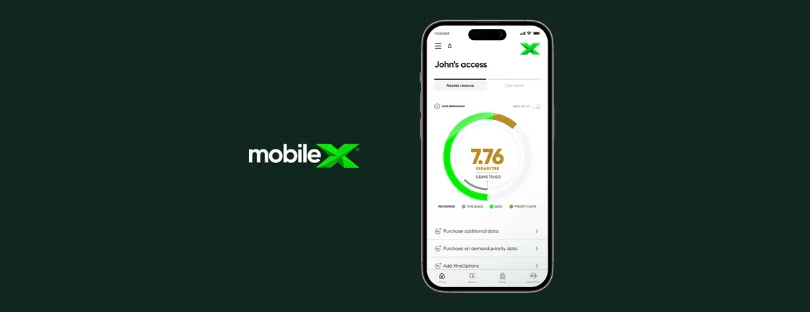
AT&T revenue dips 9% – takes hits on roaming, retail, waived fees
AT&T today said its consolidated revenues fell nearly 9 percent to $41 billion in the second quarter as the Covid-19 pandemic impacted revenues across all business segments.
AT&T’s mobility segment reported postpaid subscriber losses and lower service revenues for the second quarter, as the COVID-19 pandemic impacted international roaming, retail closures and more customers not paying their bills.
Still, “wireless is clearly AT&T’s best business” and “doing reasonably well,” wrote MoffettNathanson analysts led by Craig Moffett in a Thursday note to investors. “Margins in Q2, to cite just one high point, were very strong.”
Wireless EBITDA service margin was 57.2% versus 56.2% in the same period a year ago.
Overall, AT&T’s revenue was down to $41 billion from $45 billion in Q2 2019. Of that, the pandemic accounted for about $2.8 billion. AT&T CEO John Stankey said AT&T is operating on the assumption that “significant accommodations” for COVID-19 will be the business norm well into 2021.
On the wireless side, AT&T estimated the pandemic had $450 million negative impact on service revenue and $250 million impact on equipment revenues.
AT&T recorded net postpaid phone subscriber losses of 151,000. That figure includes 338,000 subscribers counted as disconnects – or customers AT&T still provides service to who haven’t paid their bills, but who are expected to be disconnected once the Keep Americans Connected pledge ends.
Like other service providers across the country, AT&T committed to keep non-paying customers connected as part of the federal FCC program. Stankey, speaking on the carrier’s Q2 earnings call, pointed out there are also several state-level programs.
“We’re actively contacting, working with and trying to retain these customers,” Stephens said. “We haven’t given up on them and they haven’t given up on us. Clearly we are hopeful in retaining these customers.”
In terms of those customers regaining the ability to pay and coming back, Stephens said AT&T is generally getting a positive response but that it’s still too early to say how many. The carrier reported 135,000 prepaid phone net adds, with total phone growth essentially flat.
Service revenues pressured at&t revenue
With international travel severely restricted AT&T lost roaming revenue, which doesn’t translate into reduced costs. It also waived late fees and overage charges, together bringing down service revenues in Q2 1.1% year over year to $13.7 billion. Equipment revenues were up slightly 0.3% to $3.5 billion, but the upgrade rate for postpaid handsets continues to be low at 3.3%, the same as a year ago, partly attributed to store closures in response to the pandemic.
Prior to the COVID-19 crisis, AT&T had expected a major 5G upgrade cycle. The carrier is “starting to see a little bit of life come back” into the handset segment, Stankey said. More devices are coming later this year that are expected to stimulate store traffic.
AT&T and other carriers shuttered retail stores across the country in response to the pandemic, with many staying closed permanently. The carrier is seeing customers come back though.
“Traffic has bounced back in the stores pretty well, it’s still not quite entirely back” Stankey said, noting there are pockets that have possibly returned to normal but also areas that have not. In those, AT&T is trying to give customers other options like a curbside pick-up.
The biggest wildcard that remains for retail is what happens in states that continue to be pressured by COVID-19, according to Stankey.
When asked by investment analysts if customers are dropping down to lower wireless service tiers since working at home more often, he said AT&T is actually seeing the opposite, with the popularity of premium unlimited plans increasing. That’s attributed, in part, to the inclusion of AT&T’s recently launched streaming service HBO Max.
“This is where HBO Max and wireless come together nicely,” Stankey said. “We’re giving customers a reason to go up in the more robust unlimited plans and we’re already seeing that penetration increase.”
It’s happening on the HBO Max side, and momentum is expected to carry forward for consumers to buy into the 5G network, once the “right kind of equipment” shows up on the 5G device side. Just today, AT&T’s 5G service expanded nationwide.
Still, with other impacts from COVID-19, postpaid phone-only average revenue per user (ARPU) decreased 1.9% to $54.47 in Q2.
5G is not a replacement for fixed broadband at&t revenue
Of AT&T’s priorities ahead, broadband – both wired and wireless – remain at the top. But Stankey, who took over the helm July 1, doesn’t see 5G as a replacement for single-family home broadband near-term.
AT&T wants to build fiber to serve a combination of needs in the consumer space, deploy 5G and help business customers. With the right engineering and planning, deployments can be leveraged across all three business segments.
Still 5G for home broadband, Stankey said it’s “going to be tough to beat” when there’s already gigabit fixed wired networks in place. While he doesn’t think that’s the optimal place to win in the market right now, AT&T isn’t totally ruling it out of the question.
“If it ultimately moves that way and we start to see technology stabilizing, we’re as well positioned as anybody to pivot to that,” Stankey said. “We’ve certainly got the spectrum and the assets to make that happen.”
Q2 earnings highlights:
- Net income for the quarter was $1.2 billion
- Wireless postpaid churn 1.05% down from 1.07% yoy. Postpaid phone churns is down to 0.84% compared to 0.86%.
- The lowest-ever prepaid churn is less than 3.0%.
- Total mobility revenues $17.1 billion, down 0.8% year over year.
- Gross capital investment is expected to be around $20 billion range for 2020, in line with guidance









